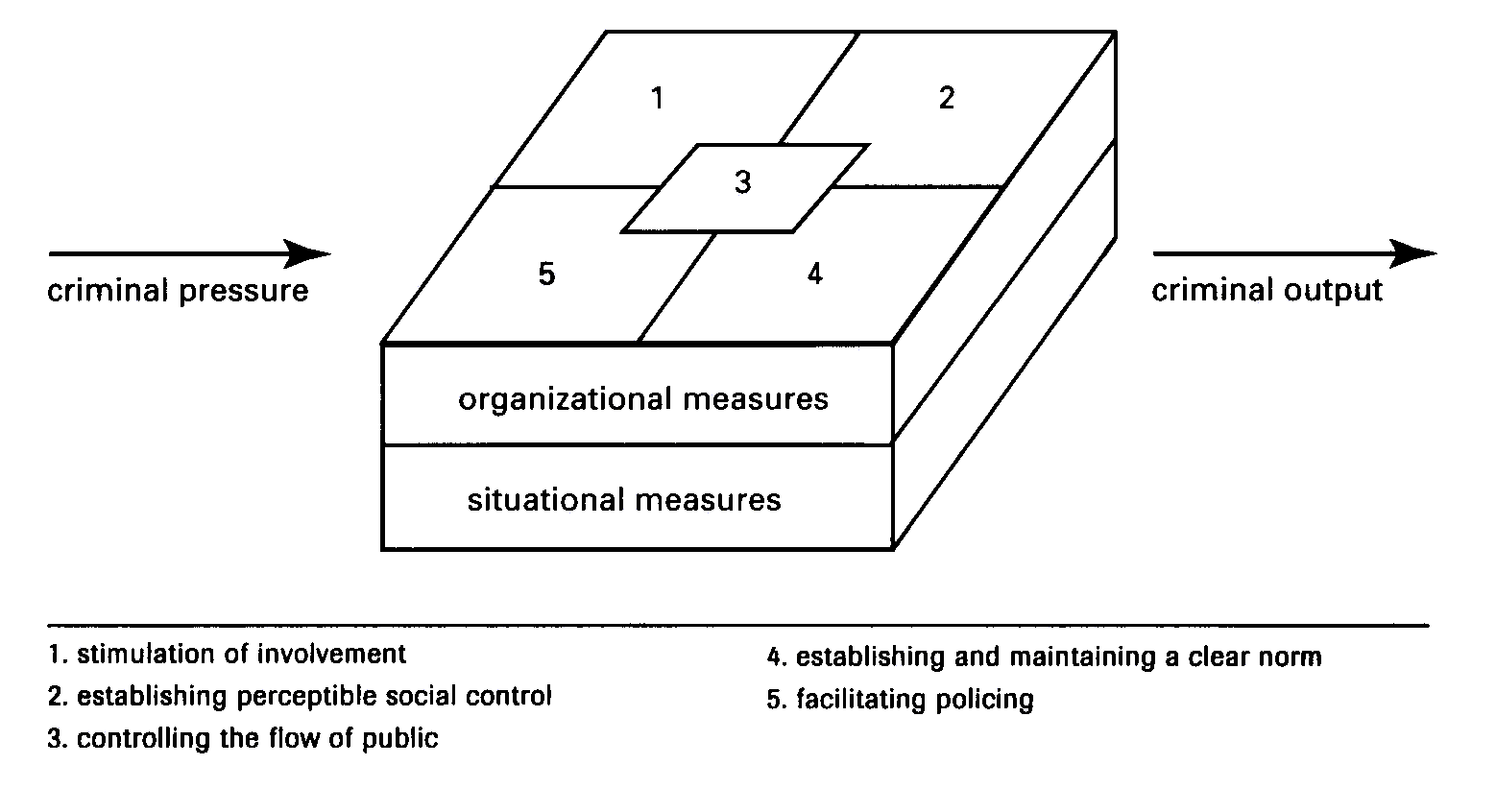home | nieuws | projecten | www-links | bibliotheek | vraag het RCM
Crime Prevention within Metro SystemsArticle for The European Journal on Criminal Policy and
Research, vol. 4.4, |
|||||||
Research findings Gaylord and Galliher (1991) distinguish three factors to explain the low crime rates in the Mass Transit Railway system of Hong Kong: the low incidence of crime in Hong Kong society, the efficient working method of the MTR police, and the cunning planning and design of the MTR trains and stations. This model is an adequate explanation for the situation in Hong Kong but needs further adjustment to gain international validity. The incidence of crime and feelings of insecurity within metro systems can best be explained by the following model. Model. Criminal incidence within metro systems The occurrence of both objective ('common' as well as terrorist) crimes and feelings of insecurity within metro systems is conditioned by the amount and nature of crime in the direct environment of the metro system and the criminal opportunities limited or created by the total set of situational and organisational measures within the metro system. The amount and nature of crime in the neighbourhoods where the metro stations are situated are a result of historical, cultural, social, and political factors falling outside the sphere of influence of the metro operators. Because of this, they must be regarded as the given fact of external criminal pressure. The criminal pressure on a metro system is filtered by the total set of crime prevention measures consciously or unconsciously implemented within the metro system. This total set of measures creates or limits the opportunity for crimes to take place within the premises of the metro system and influences the passengers' feelings of safety. In contrast to external criminal pressure, criminal opportunity within the system cán be influenced by the managers and constructors of the metro system. Successful sets of crime prevention measures are characterized by the fact that they limit criminal opportunity to a degree that the scope of crime within the metro system is considerably lower than the crime level in its direct environment. Inadequate implementation of the measures results, on the other hand, in a rather limited prevention effect or even in the creation of criminal opportunity. The international comparative study has recovered five different crime prevention strategies which can be applied to limit the opportunity of crime and feelings of insecurity within the premises of metro systems. These crime prevention strategies are: the stimulation of involvement, establishing perceptible social control, facilitating policing, establishing and maintaining a clear norm, and controlling the flow of public. All of these strategies are known to the international theories of crime prevention and have both a situational as well as an organisational component. In spite of the availability of theoretical knowledge on these strategies they are, however, applied with different degrees of profoundness by the various operators of the studied metro systems. Practical knowledge on implementation of these strategies within metro systems seems to be scattered among the different countries and their respective metro corporations. Every metro corporation holds some pieces of knowledge, but only a few have a grip on the whole set of preventive requirements. In virtually all systems, some strategies are implemented to a high level of profoundness, while other strategies are simply neglected. The causes of these inconsistencies can be found in the history of the respective metro corporations and the culture of the country and city in which they are situated. Hong Kong, for example, has much more experience with and less restraint toward the deployment of police officers within the metro system than, for example, Amsterdam. This results in more attention paid to the facilitation of policing through design and management requirements in the Mass Transit Railway system of Hong Kong than in the subway of Amsterdam. In most of the metro systems, much can be done to improve the full application of the total set of crime prevention principles. The theoretical backgrounds of the five crime prevention strategies and their practicle consequences for the construction and management of metro systems are extensively treated in the book and outside the scope of this article. However, it is important to state that the application of individual strategies will have some effect, but that their real strength will only become visible when they are realised together in a balanced mix of mutually attuned measures. The individual strategies are highly interconnected and mutually reinforcing. Application of the whole range of the five crime prevention strategies will have a big synergistic effect in which the combined crime prevention effect is many times bigger than the sum of its parts.
|
|||||||
|


